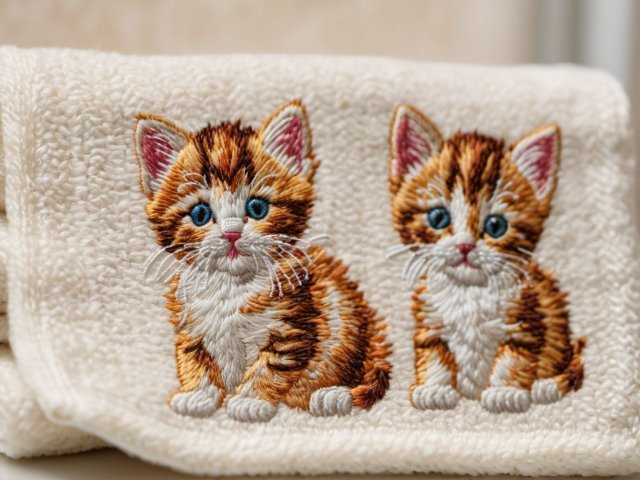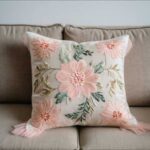A Helping Hand
Beginners Guide to Washcloth Embroidery
Introduction
Embroidery is a delightful craft that allows you to add a personal touch to everyday items. Washcloth embroidery, in particular, offers a unique opportunity to infuse creativity into practical objects. In this beginner’s guide we’ll explore how to embroider washcloths using a machine, providing step-by-step instructions for stunning results.
Embroidering washcloths not only elevates their functionality but also adds a touch of elegance to your daily routine. Whether you’re embellishing washcloths for your own use or creating items for others, the process of transforming a simple piece of fabric into a personalized masterpiece is truly rewarding. With each stitch, you have the opportunity to express your creativity and create something truly unique. Join us as we embark on this embroidery journey, uncovering the secrets and techniques behind washcloth embroidery.
Getting Started with Washcloth Embroidery
Embroidery enthusiasts often find themselves drawn to the captivating world of washcloth embroidery, where creativity meets functionality in delightful harmony. Unlike traditional embroidery on garments or decorative pieces, washcloth embroidery offers a distinct canvas for expression. These humble cloth squares, often overlooked in their simplicity, become the perfect medium for showcasing intricate designs, personalized monograms, or whimsical motifs.
As you embark on your washcloth embroidery journey, you’ll discover the joys of transforming everyday items into cherished keepsakes. Whether you’re an experienced embroiderer seeking a new challenge or a novice eager to explore the possibilities, washcloth embroidery beckons with its promise of endless creativity. In this section, we’ll delve into the myriad benefits of washcloth embroidery, explore its creative potential, and provide essential tips to help you embark on your stitching adventure with confidence and enthusiasm. So, gather your materials and let’s dive into the enchanting world of washcloth embroidery!
Your Step-By-Step Guide
Embarking on a journey of washcloth embroidery opens doors to a world of creativity and personalization. With each stitch, you infuse your unique style into everyday items, creating pieces that are both functional and beautiful. Let’s explore the step-by-step process of washcloth embroidery, from gathering your materials to putting the finishing touches on your masterpiece.

Step 1: Gather Your Materials
Before you begin, gather all the necessary materials:
• Washcloths made of cotton or terrycloth
• Embroidery machine
• Embroidery thread in your desired colors
• Stabilizer
• Embroidery hoop
• Scissors
• Water soluble pen or disappearing ink marker
• Scrap Fabric
Step 2: Prepare Your Washcloth
Start by hooping your washcloth along with a piece of stabilizer. The stabilizer helps keep the fabric taut and prevents puckering during embroidery. Ensure the washcloth is smooth and wrinkle free within the hoop.
Step 3: Choose Your Needle
Selecting the right needle is crucial for successful embroidery. Choose a needle specifically designed for machine embroidery, typically labeled as “embroidery” or “embroidery/titanium.” These needles have a special coating that helps prevent friction and allows for smoother stitching. Additionally, consider the size of the needle based on the fabric and thread you’re using. For washcloth embroidery, a size 75/11 or 80/12 needle is commonly recommended, but adjust according to the thickness of your fabric and thread.
Step 4: Choose Your Design
Select a design for your washcloth embroidery. Many embroidery machines come with built-in designs, or you can purchase digital designs online. Transfer the chosen design to your embroidery machine according to the manufacturer’s instructions.
Step 5: Thread the Machine
Thread your embroidery machine with the chosen embroidery thread. Use the same color thread in the bobbin to ensure a uniform look on both sides of the washcloth.
Step 6: Practice Stitching
Before diving into your main project, it’s a good idea to practice stitching on a scrap piece of fabric. This allows you to familiarize yourself with the machine’s settings and ensure that everything is working correctly before starting on your washcloth.
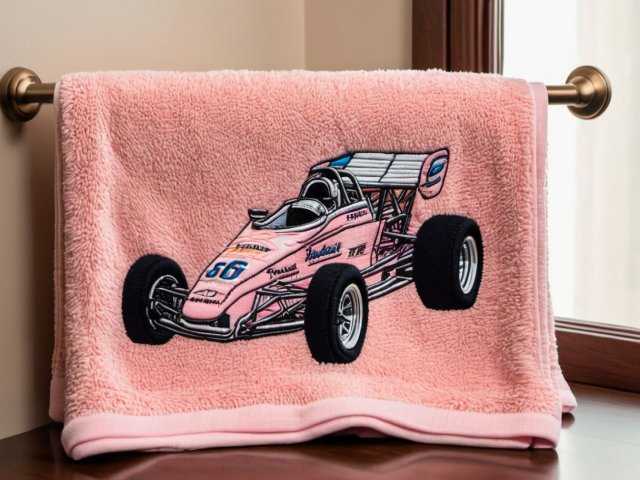
Step 7: Position the Washcloth
Place the hooped washcloth into the embroidery machine, ensuring it’s securely in place. Use the machine’s controls to adjust the position of the needle so that it aligns with the starting point of your chosen design.
Step 8: Start Embroidering
Once everything is set up, it’s time to start embroidering! Follow the prompts on your embroidery machine to begin stitching your chosen design onto the washcloth. Take care to monitor the process and make any necessary adjustments to thread tension or speed.
Step 9: Remove the Washcloth
Once the embroidery is complete, carefully remove the washcloth from the embroidery machine and hoop. Trim any excess stabilizer from the back of the washcloth using scissors.
Step 10: Experiment with Stitch Settings
Most embroidery machines offer a variety of stitch settings, including stitch length, density, and width. Take some time to experiment with these settings to achieve the desired look for your washcloth embroidery. You can create different effects by adjusting the stitch density or using different types of stitches.
Step 11: Secure Loose Threads
After completing the embroidery, carefully inspect the washcloth for any loose threads. Use a needle or a pair of scissors to trim any stray threads, being careful not to cut the embroidered stitches.
Step 12: Personalize Your Design
Get creative and personalize your washcloth embroidery by adding monograms, names, or special messages. Many embroidery machines allow you to input custom text, making it easy to add a personal touch to your creations.
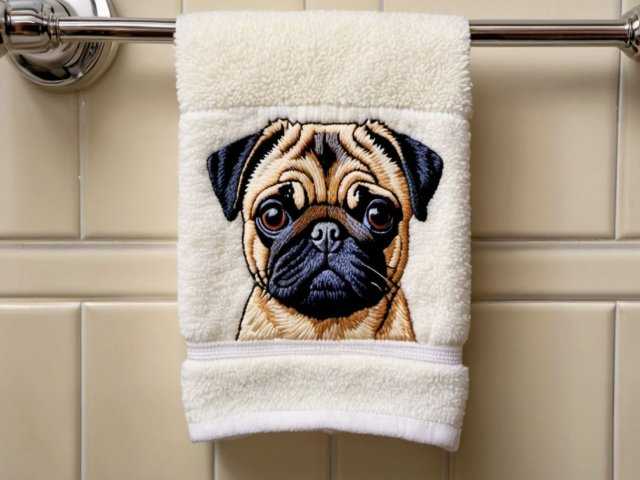
Step 13: Experiment with Colors
Don’t be afraid to experiment with different thread colors to create unique and eye catching designs. Consider using complementary or contrasting colors to make your embroidery stand out.
Step 14: Care for Your Washcloth
To preserve the integrity of your washcloth embroidery, it’s essential to care for it properly. Wash the embroidered washcloth in cold water with mild detergent, and avoid using bleach or fabric softener, as these can damage the embroidery. Tumble dry on a low heat setting or air dry to maintain the vibrancy of the colors.
Troubleshooting Tips and Techniques
Even with careful attention to detail, you may encounter challenges during the embroidery process. Here are some troubleshooting tips and techniques to help you overcome common issues:
1. Uneven Stitching: Uneven stitching can occur due to inconsistent tension or improper hooping. Check the tension settings on your machine and ensure the washcloth is securely hooped. Additionally, make sure the embroidery machine bed is clean and free from dust or debris that could interfere with smooth stitching.
2. Thread Nesting: Thread nesting, also known as bird’s nesting, happens when the thread bunches up under the fabric instead of forming clean stitches. To resolve this issue, rethread the machine, making sure the thread is properly seated in the tension discs and thread guides. Check the bobbin tension and adjust if necessary.
3. Design Distortion: Design distortion can occur if the fabric shifts during embroidery or if the design is too densely stitched for the fabric type. Use quality stabilizer and ensure the fabric is securely hooped to prevent shifting. If the design appears distorted, try reducing the density of the stitches or using a lighter stabilizer.
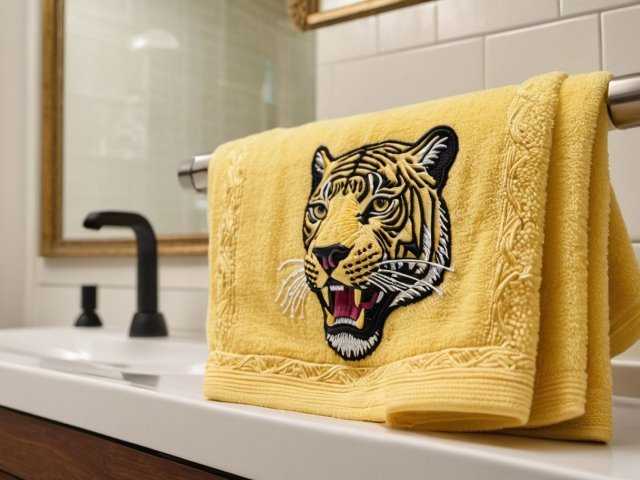
4. Needle Breakage: Needle breakage can occur if the needle is dull, bent, or if the wrong needle size is used for the fabric. Replace the needle with a fresh one and ensure it’s the appropriate size and type for the fabric and thread. Check for any obstructions in the needle plate or bobbin area that could be causing the needle to break.
5. Thread Tension Issues: Inconsistent thread tension can result in loose or tight stitches and uneven embroidery. Check the tension settings on your machine and adjust as needed, ensuring that both the top and bobbin tensions are balanced. Clean the tension discs regularly to remove any lint or debris that may affect tension.
6. Thread Breakage: Thread breakage can occur due to various reasons such as incorrect threading, tension issues, or using low quality thread. To prevent thread breakage, ensure that the thread is properly threaded through the machine and the tension settings are adjusted correctly. Additionally, use high quality embroidery thread suitable for your machine and fabric.
7. Bobbin Issues: Problems with the bobbin, such as uneven winding or incorrect placement, can lead to stitching irregularities. Ensure that the bobbin is wound evenly and inserted correctly into the bobbin case. Clean the bobbin area regularly to remove any lint or debris that may affect its performance.
8. Machine Jamming: If your embroidery machine jams or stops unexpectedly during stitching, it may be due to a variety of reasons, including tangled thread, a dull needle, or a mechanical issue. Carefully remove the hoop and fabric from the machine, then check for any obstructions or tangled threads in the needle or bobbin area. If necessary, rethread the machine and replace the needle before resuming embroidery.
9. Fabric Puckering: Fabric puckering occurs when the fabric becomes wrinkled or gathered during embroidery, resulting in an uneven or distorted design. To prevent fabric puckering, ensure that the fabric is properly stabilized and hooped to maintain tension. Additionally, use the appropriate needle and thread for the fabric type to minimize friction and tension issues.
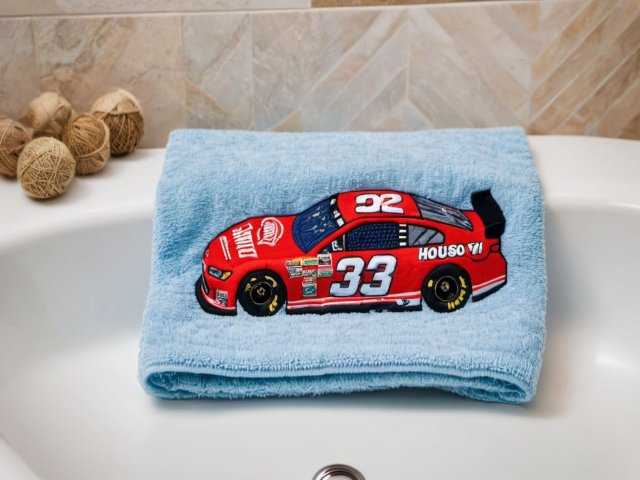
10. Design Alignment: Misalignment of the embroidery design can occur if the fabric shifts or the hoop moves during stitching. To ensure accurate design alignment, double check the positioning of the fabric in the hoop before starting embroidery. Use basting stitches or temporary adhesive spray to secure the fabric in place if necessary.
By addressing these common issues, embroiderers can troubleshoot and resolve problems effectively, ensuring smooth and flawless embroidery results. Please note that these are not the only issues you may encounter during washcloth embroidery. There may be other challenges that arise, but with patience and practice, you’ll become more adept at troubleshooting and achieving flawless results.
Conclusion
Embroidering washcloths using a machine is a fun and rewarding craft that allows you to personalize everyday items with ease. By following these step-by-step instructions, troubleshooting tips, and techniques, you can create stunning washcloth designs to enjoy yourself or share with others. So, fire up your embroidery machine and let your creativity flow!
Embroidery not only enhances the aesthetic appeal of washcloths but also adds a personal touch to your daily routine. As you continue your journey in washcloth embroidery, remember that practice makes perfect. Don’t be discouraged by setbacks; instead, view them as opportunities to learn and improve your skills. With each stitch, you hone your craftsmanship and develop a deeper appreciation for this timeless art form. So, embrace the joy of creativity and immerse yourself in the delightful world of washcloth embroidery!
Now that you have read through this article, feel free to SHOP for products we have created. If you are looking for something special which isn’t in our store, feel free to contact us.

